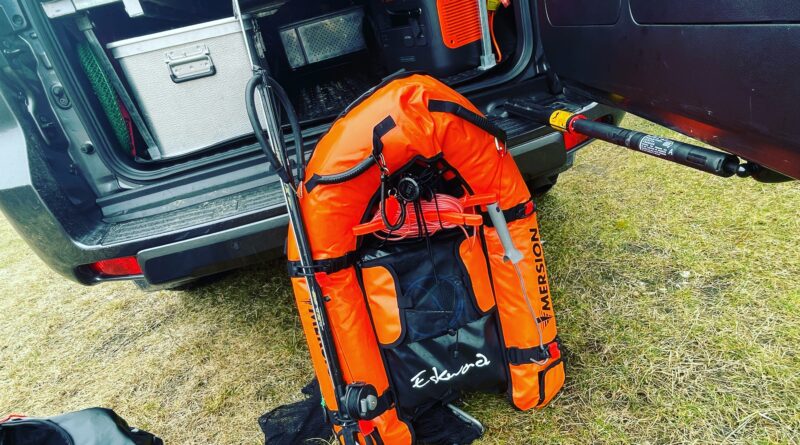Spearfishing Report Denmark – Lobster Catching in Winter
This Denmark Spearfishing report is about lobster catching in winter. A travelogue about beautiful Denmark.
Inhaltsverzeichnis
Denmark border – Arriving by car
03/17/2023
At work I had already announced that I would like to leave earlier that day. I had been preparing for this vacation for months. I couldn’t wait to get out of town. The Danish vastness and unspoiled coast of the Danish North Sea and Baltic Sea awaited us. At 3:00 p.m., I was fortunate to be able to lower the flags at work. I drove home and took one last good shower. I had already prepared the car in painstaking detail work in the last few days. Everything was packed and I just grabbed my backpack with clothes and you put them in the car. at 3:15 p.m. I rolled out of my driveway and left Cologne city center full of anticipation.
On the way to Hamburg, Andy and I spoke on the phone countless times. One conversation revolved around dinner, the next around the expected catch of the next few days. We were both hot as frying pan fat. At 10:00 p.m. I drove through the Elbe tunnel, which was the gateway to Scandinavian freedom for me. From the Elbe Tunnel it was not far to the Danish border. I met Andy at an Aral gas station 50 km from Hamburg. To enjoy a bit of Burger King meat one last time, when Andy stopped by the Aral gas station, we were as happy to see each other as Schnitzel. After both had refueled several liters of diesel and had paid the cashier, who had been improved or worsened by the supposed cosmetic surgery, we went to the not very trustworthy Burger King and enjoyed fast food one last time before indulging in the Danish specialties. A bearded border guard was waiting for me at the Danish border, but he waved me across the Danish border with an “everything is fine”. After a few hours drive I had reached dreamland. Carried by the good day, we drove the last 350 km. Andy and I spent the last 250 km in wisps of fog flying by. The fog within the last few kilometers became denser and denser, so that we could only see a few meters ahead. Turning on the high beam didn’t help at all, as it lit up the fog so much that you couldn’t see anything at all. We headed towards our destination on lonely Danish country roads. I was now 30 km ahead of Andy because he had forgotten to fill up with Adblue and I was able to experience a certain advantage.
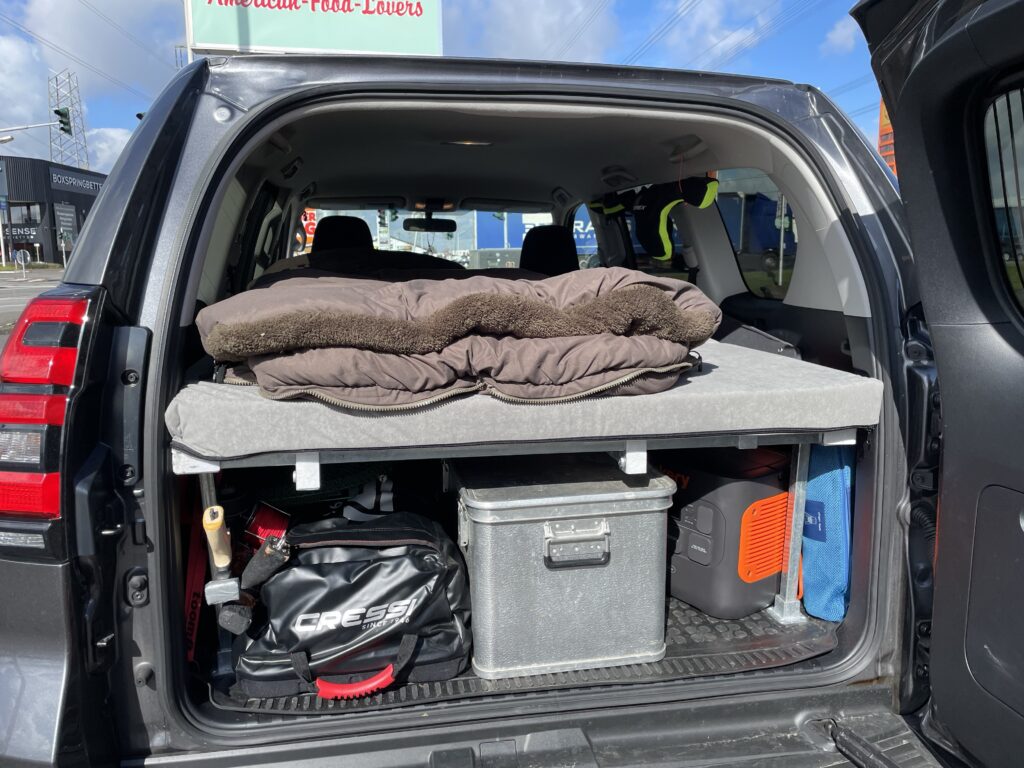
Andy had previously sent me a spot via Google Maps. All of our journeys and destination coordinates were communicated via the share button on the Google Maps app. When I arrived at the target spot over 5km of bumpy and muddy roads, a metal chain between two posts awaited me. I got out of the Land Cruiser in the drizzle and stepped in two inches of mud. I was still thinking about leaving my rubber boots at home, but fortunately I decided to pack them. While Andy drove the last 20 km, I tried to crack the four-part combination lock on the metal chain, but I couldn’t. However, the chain did not have much to oppose my tire lever from the Land Cruiser. I drove onto the beautiful, green meadow, and when I got out, I immediately noticed that it was only a muddy plain due to the constant rain. I parked the car and immediately noticed the deep marks the car had cut in the ground. When I spotted Andy’s headlights in the distance, I doubted it was a good place to sleep. When Andy drove up, I informed him directly about the chain, which I had to remove so that we could stay in one place. Andy drove 7 m into the meadow and the tire of his camper van immediately spun. The tire drove itself deep into the muddy ground within seconds. It was now 2:30 a.m. and we were both slightly at the end of our strength. Nevertheless, we both took it with humor, after the car could not be freed from the mud even with wooden boards placed underneath, I grabbed my tow rope, which fortunately I had stowed away in the Land Cruiser. Andy attached the tow rope to his Kemper on the rear axle and I attached it to my front axle. The Land Cruiser pulled the car out of the mud hole with no problem. Meanwhile I watched Andy in the rear view camera. We unhitched Andy’s car and I drove a few meters further, when Andy tried to start again the car got stuck even deeper in the mud. After another liberation action, we set another path marker on Google Maps. We drove 4 km to a slipway and parked the car right by the sea. The clock had now struck 3:00 am. I opened the bar I had set up in my car freezer. I fed Andy Nordic Gintonic with Schweppes and cucumber. There were also some beers, which gave us the rest until 4:00 a.m. Well drunk we crawled into our cars and recovered from the long day of arrival.

Denmark water temperature – diving in winter
03/18/2023
The next morning I could barely open my eyes from a headache, but I managed to get my first glimpse out of the Land Cruiser at 11am. We had parked in the dark by a beautiful sand dune. Andy and I slowly got out of our cars. After Andy served us a good breakfast, there was homemade wild sausage and a reasonable scrambled egg with coffee, we prepare for the first session. We took some of the slightly salty Baltic Sea water and warmed it up on the gas cooker, mixed with soap. He gave the necessary lubricant to get into the neoprene suits. However, we had warmed up a little too little water, so getting dressed was a dry agony. After we had dressed in spearfishing clothes, we walked 200 m to the announced spot, in complete fog we got into the water. After a 20m swim, a sea lion appeared next to me. I had already seen these impressive animals underwater in the Netherlands, so I was just a little scared. Nevertheless, there is always a bit of fear, if such an animal falls on you in the water, I think you would have little to counter it. We only swam the first 400 m over sandbank after sandbank. Little structure could be seen on the ground. The water had a thermocline, which made visibility more than 2 m difficult. You can compare it to looking through an owl bottle. My 5mm gloves squeezed my fingertips so that after a few minutes they went completely numb. After 30 minutes of swimming I could no longer feel my fingertips. In the far distance of the fog, I spotted Andy’s fins stretching toward the sky as they dived. When I swam up to him, he told me that he had already caught three lobsters. I had just caught one to 2 kg of mussels. After 1 hour we left the water because the cold got the better of us. When I swam on land I didn’t feel my feet anymore either, swimming was only possible by moving my lower legs and knowing that I was moving my feet with them. When I got ashore I had trouble getting my gloves and fins off with them because my hands and feet were so numb. Andy felt the same way. When I took off my gloves, my fingertips burned like someone had hit each finger with a hammer. I was aware that this represented what is known as reperfusion syndrome, the arteries in the fingers dilated and allowed blood flow back to the fingertips. This burns like fire. After 15 minutes of pain, we pulled ourselves together and made our way to the car. After a good lunch with Andy’s hunting achievements we drove to a ferry terminal. There we tried our luck for herring, in the dense fog you couldn’t distinguish the horizon from the water surface. Herrings did not bite fair outriggers on the paternoster. From the ferry terminal we drove to a beautiful beach where we parked our cars behind a rosehip hedge. Andy and I set up our camp chairs and began preparing the clams and lobster of the day. The food, prepared in the fresh air, tasted excellent. Topped off with a few beers, we fell into bed happy and content. At night I was already dreaming of the next day, of diving in foggy waters.
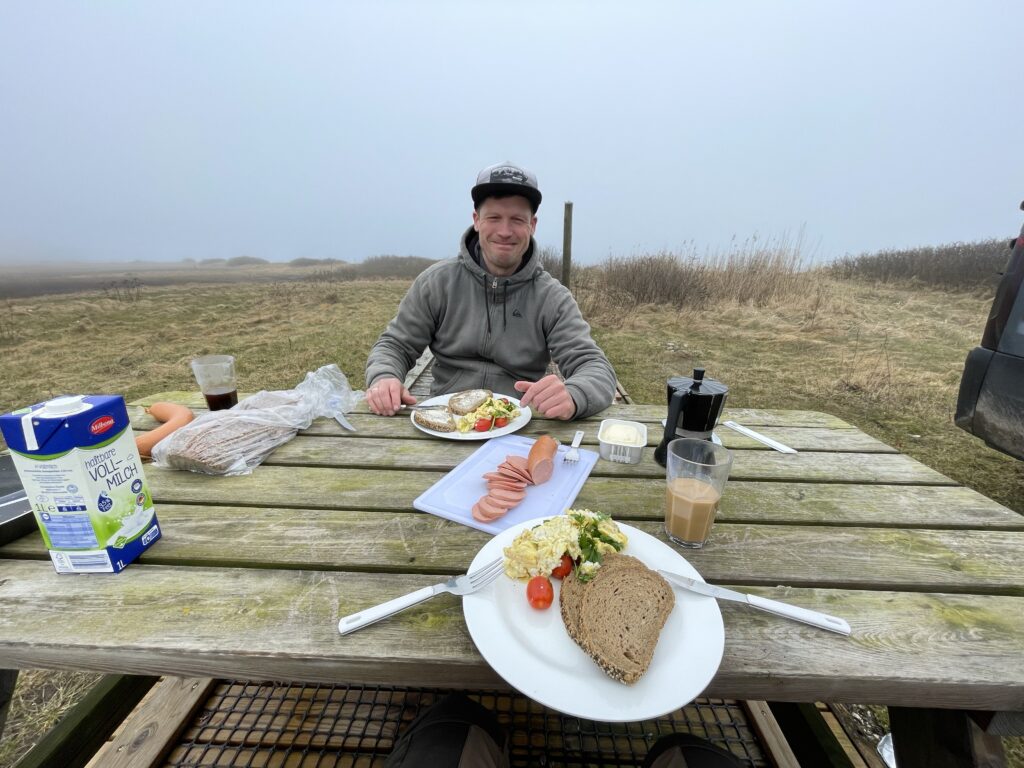
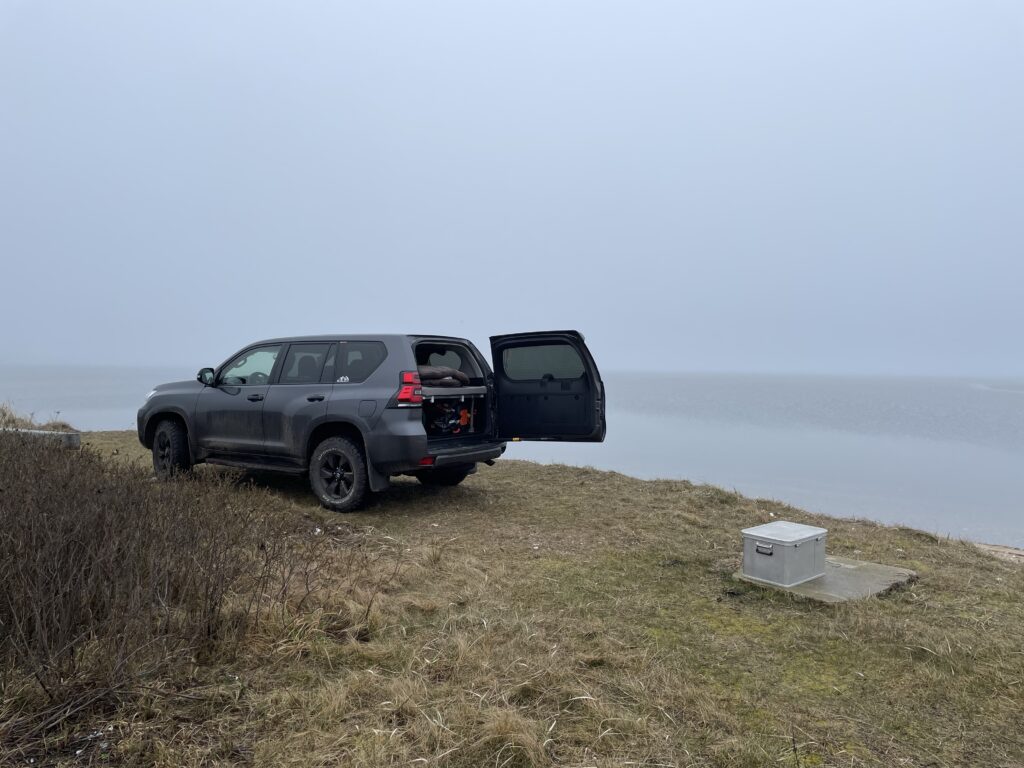
Collecting oysters and mussels in Denmark
03/18/2023
I woke up for the first time at 8:00 a.m., in the darkened back of the district there was no reason to leave the car before 10:00 a.m. Fog greeted us again and played around the car. After my bladder got the upper hand at 10:00 a.m., I had to get out of the car. In the driver’s seat, I put on my pants, North Face sweater, and jacket. When I got out of the car, a sensitive wind greeted me. Although the air temperature was 10° C, the cool wind drew a lot of energy from your bones. After a quick breakfast in Andy’s car, we noticed that the wind was working against us. The rising surf made the water increasingly cloudy. We decided to go leeward and after 20km we saw a beautiful green slope running out into the water. We searched our spots using two different apps, one to locate the wind direction and Google Maps to determine the underwater structures. We changed again immediately after reaching the spot and after filling the suits with the heated water, we swung into the cold water again. Unfortunately, the reef that we found on Google Maps was only 1.5 m deep and therefore too shallow for lobsters. However, the spot turned out to be great for mussels and oysters. On a few square meters I collected mussels piece by piece, the individual mussels as big as a child’s hand. After realizing that there was no lobster to be found in the area, I switched to clam hunting and felt two whole hauls of mussels and oysters. Andy left the water in front of me and when I got to the cars after a short crawl session we compare our two filled collection bags. Andy had collected 7.5 and I had collected 9.7 kg of mussels. After a short stop at a bridge, where we again tried unsuccessfully to catch herring. We drove to our sleeping place of the 2nd night. After we boiled and peeled a total of 4-5 pots of mussels per person, we vacuumed the mussels using the solar generator I bought and Andy’s vacuum machine. Andy had collected six good bags and I had collected twelve bags of mussels. The next day the wind was supposed to shift and we were looking forward to a crystal clear dive spot. After washing the dishes in the sea, we crawled into our beds.
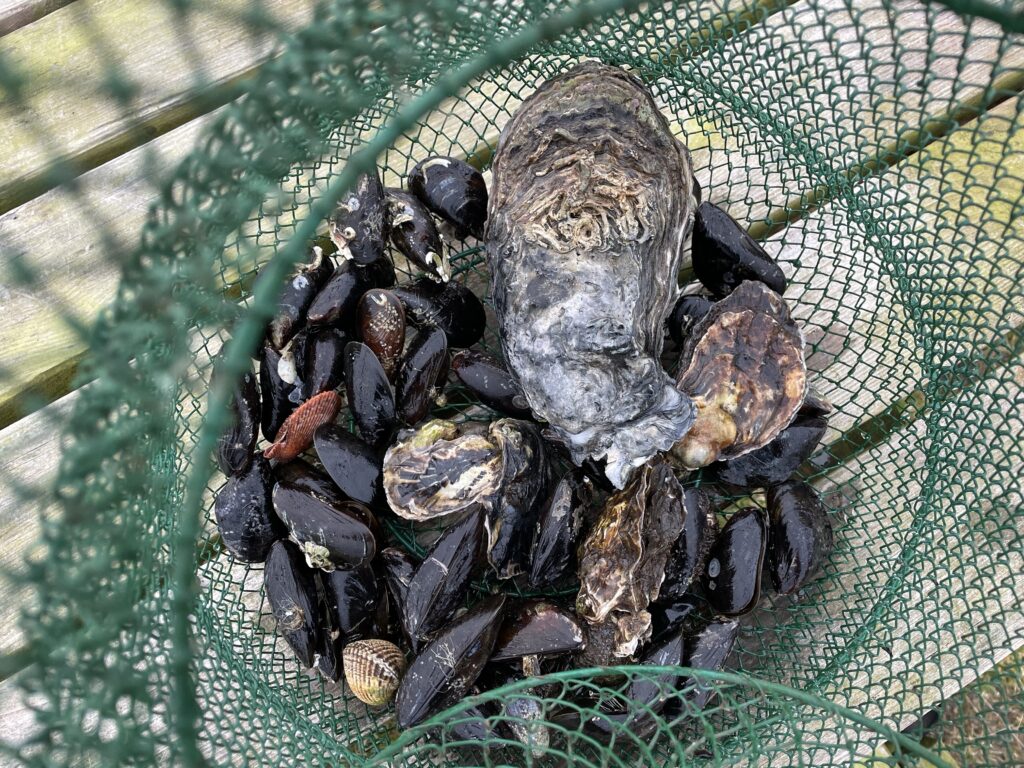
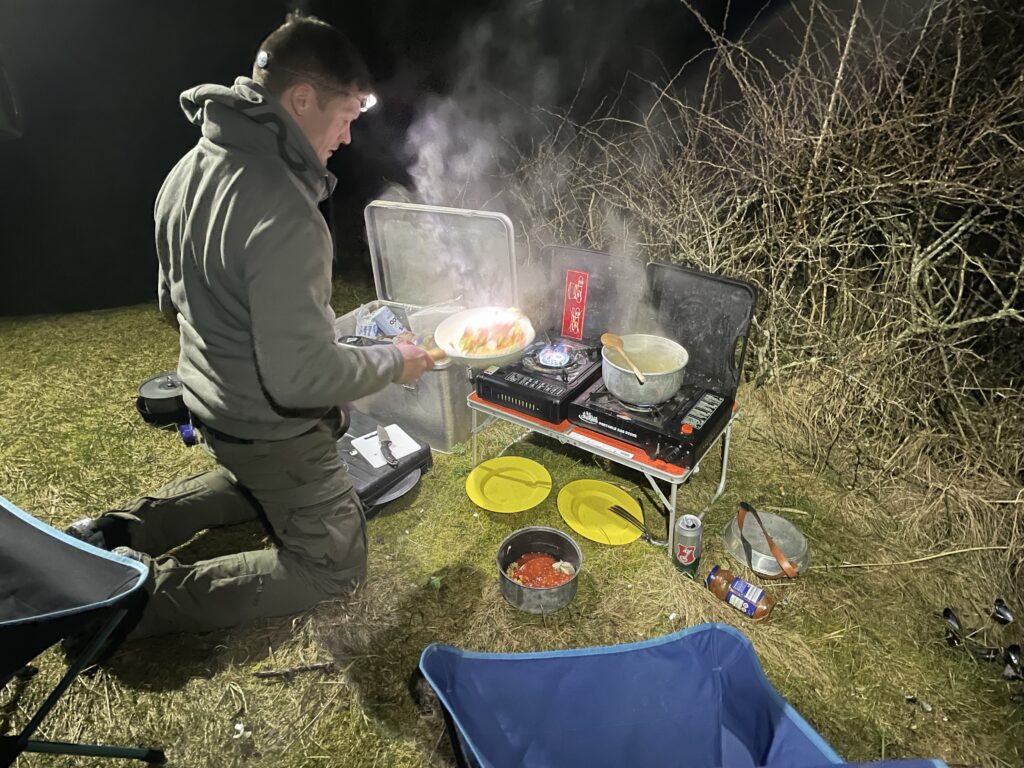
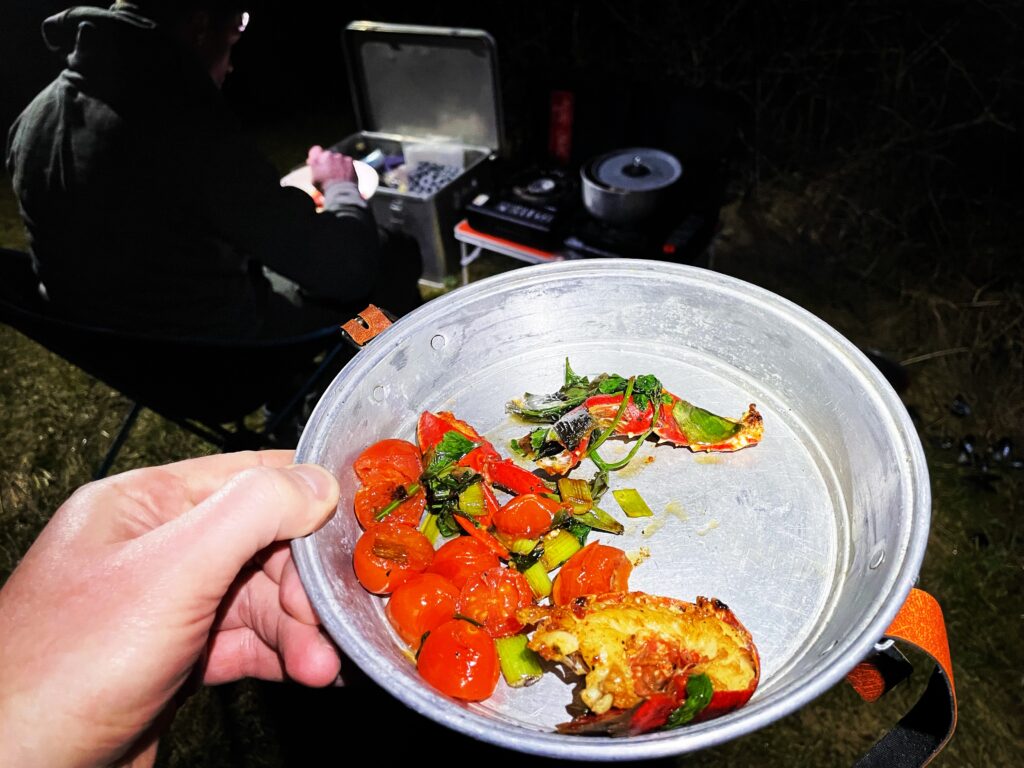
Catch Lobster Denmark
03/19/2023
After a light breakfast, Andy ordered me to heat water for diving. After we had each heated up 1 liter of fresh water with the camping stoves we had brought with us, we immediately poured it into our diving suits with soap added. After we had looked at the reefs again on Google Maps, we started. After walking a few hundred meters along the beach, we got back into the water. The water turned out to be even cooler than the day before. The water temperature was just 3.3 °C. Even for die-hard divers, this is not a comfortable temperature. I didn’t get cold in my 5 mm suit, but the slightly too small gloves made my fingertips incredibly cold again. After swimming a few meters, we saw the structures on the bottom: stones covered with aquatic plants made the ideal habitat for lobsters. And after a few dives I saw the first big lobster in a deep crevice. Unfortunately, a lot of mud quickly whirled up and visibility deteriorated as a result, the Hummer retreated into the crevice and was therefore unreachable. Luckily I was able to arrest the first lobster after another 10 minutes. When I met Andy in the water, we swam to each other at regular intervals to update each other, he told me that he had caught a lumpfish by hand. I had only seen such an animal in the stomach of a giant halibut in Norway. After 1 hour we got so cold that we had to leave the water. The sun came out, but the wind gave us the last rest. 4° air temperature and three wind forces constant wind said the last rest of energy out of us. After Andy lay down for 1-2 hours, we found that neither he nor I had regained a reasonable body temperature. We wanted to go diving again in the afternoon, but in view of the low temperature we decided against it. In the sunshine, the Solarsaga photovoltaic panel I brought charged my solar generator by 7%. The Jackery 2000 has done a good job so far, powering the fridge and me. Around 3:00 p.m. we decided to drive to the town of Hanstholm, 40 km away, where we wanted to eat something and possibly visit a sauna. We stopped at a nice fish shack and had smoked salmon and potato salad for me and Andy fish and chips for an early dinner. With full bellies we went to the nearby swimming pool. When we got to the pool ticket office it was not manned, after we spoke to the only member of staff (hand and foot as she didn’t speak English) she just waved us through to the pool. We swam a few laps in the local swimming pool and twice went to the sauna, which drove the cold from our bones. In the evening we stood at an old German bunker on the beach. Since it was getting dark early, we quickly cook for bed. When around 10:00 p.m. several cars drove up, I was frightened. Since I was there, Andy had reported that a friend had already had to pay a fine for staying overnight here illegally. the supposed police posed as amber seekers, armed with flashlights, they ran along the beach looking for amber. When the wind was strong enough, the westerly wind blew Bernstein to the North Sea coast. The next morning Animer reported that he had had severe diarrhea during the night. He spent half the night outside. Immediately after he reported this, it started for me too. We either got an upset stomach from the mussels or from the fish stall.
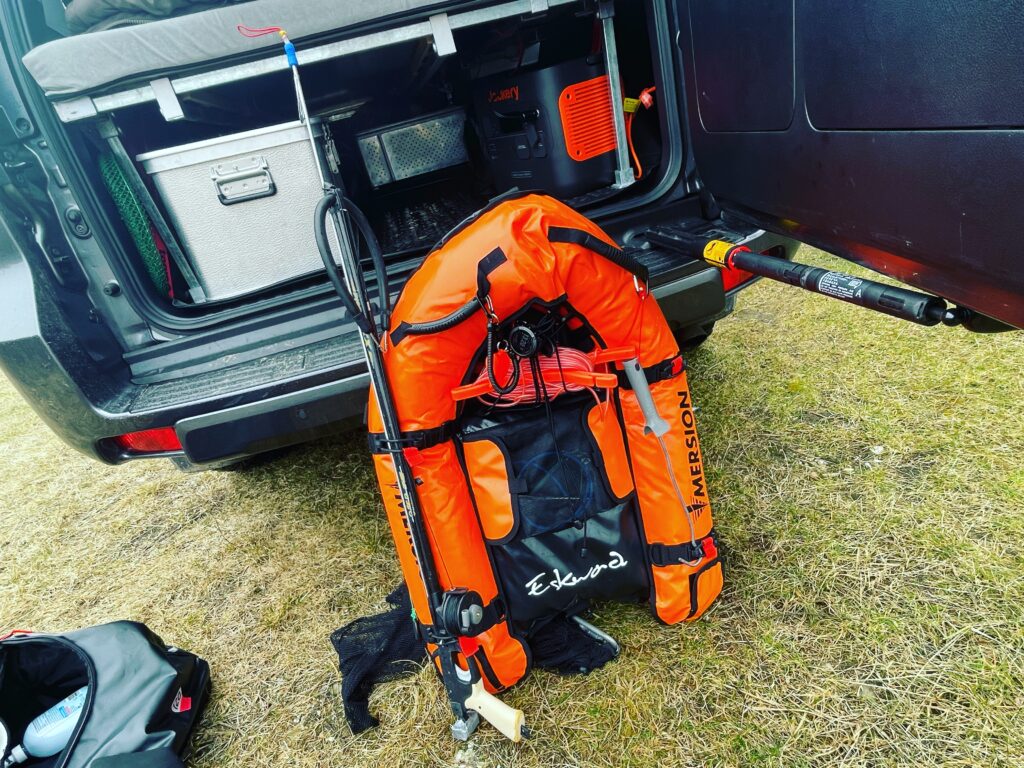
To summarize it briefly and spare you further details, we need the vacation a day later, because the diarrhea and the bad weather made further SpearFishing impossible for us. In summary, the water in March in Denmark is too cold for extensive hunts. The weather also only plays along to a limited extent in March, the leaves have not yet opened and cold rain often sweeps across the country. Overall, Denmark is probably more recommendable from May.

